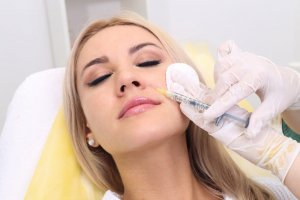PRP Injection Training: Promising Results in Medical Aesthetics
 We’re hearing a lot these days about Platelet-Rich Plasma, or PRP, and its potentially unlimited benefits in wound healing and skin rejuvenation.
We’re hearing a lot these days about Platelet-Rich Plasma, or PRP, and its potentially unlimited benefits in wound healing and skin rejuvenation.
And while some may believe PRP is a relatively new therapy, thanks to celebrities who are now getting PRP treatments and posting about them on social media, PRP has actually been used in sports and orthopedic medicine for many years, as well as in reconstructive surgery and dentistry.
In more recent years, scientists have had a sort of “aha moment” with PRP, realizing its vast usefulness in facial rejuvenation, dermatology, skin wound healing, and even hair re-growth.
What is PRP?
PRP is something that occurs naturally within our bodies. The process is of extracting and injecting PRP is simple yet requires PRP injection training:
- A small amount of blood is drawn from the client and
- Placed in a sterile tube, then spun in a centrifuge, which
- Separates white and red cells from platelets and plasma (clear fluid).
It’s now called platelet-rich plasma because it has a higher concentration of platelets. When the concentrated autologous platelets are activated in soft tissue, numerous growth factors and/or cytokines are released, including:
- Transforming growth factor beta (TGFβ)
- Insulin-like growth factor I & II (ILGF)
- Epidermal growth factor (EGF)
- Interleukin 8
- And more!
And once these growth factors and proteins bind with skin tissue’s cellular receptors, intercellular events begin such as angiogenesis, stem cell migration (to injection site) and new cell proliferation.
The actual PRP injections typically take less than 30 minutes—and are relatively painless. There may be some mild swelling, redness and bruising which typically dissipate in 1-3 days. And there is virtually no risk of side effects since PRP is made from the client’s own cells.
Results typically begin to show 3-4 weeks after treatment and continue to improve over time. For best results, three treatments are generally recommended, spaced about 1-2 months apart. Clients typically report smoother skin texture and improved tone, decreased wrinkles and fine lines and an overall firmer appearance.
One of the many exciting benefits of PRP is that it works very well other cosmetic injectables such as Botox, Juvederm, Restylane and Voluma. It can also be used in combination with several laser treatments, chemical peels and microdermabrasion.
We’re just now beginning to see the many uses of PRP in medical aesthetics. Stay tuned to see what PRP can do for you and for your clients.
PRP Training Course Objectives
During PRP Training at National Laser Institute, students will learn:
- Fundamental knowledge of the wound healing process.
- The medical history of PRP use and how it’s now being used in cosmetic medicine.
- How PRP can be used to generate soft tissue and collagen, while also firming and improving skin tone.
- Understand treatments and options for individual skin types and ages.
- Protocol for drawing blood, placing it in the centrifuge and separating its different components.
- Knowledge of proper placement of PRP for optimal results.
- Client preparation, pre and post care instructions and safety protocols.
National Laser Institute also offers Botox training, dermal fillers training, Kybella training and more! Each cosmetic injectable course combines didactic (classroom) education with clinical hands-on training for the ultimate learning experience.
By the end of a Botox training course, you will feel comfortable and confident to perform a variety of cosmetic treatments in any medical setting.
One of the things that sets us apart from other esthetics schools is we spend millions of dollars each year to provide students with scheduled clients in order to gain real world experience in a medical spa setting.
For more information on our PRP Injection Training Workshops or any of our other medical aesthetics training or CE/CME training for medical professionals, please click here or call us at 800-982-6817.








